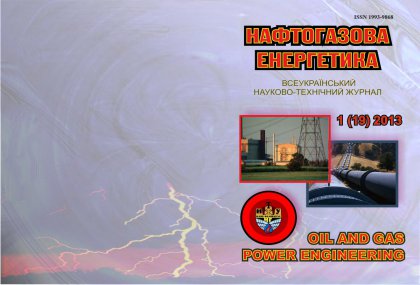FEATURES OF THE STRUCTURE OF SOLID HYDROCARBONS AND THEIR INFLUENCE ON THE MOTION OF OIL IN THE PIPELINES
Keywords:
high-viscosity oil, paraffin, crystal lattice, melting temperature.Abstract
The physical and chemical properties of high-viscosity oils have been examined in detail, because their abnormality significantly affects the process of pumping over by main pipelines. We’ve defined the main paints of the paraffin formation process including the peculiarityes of petroleum paraffin molecular structure and their physical and chemical properties. It is proved that it is necessary to take into account all of the 17 separate components of the paraffin in order to make an adequate characteristic of the high-viscosity oil abnormality. Since the melting point of the paraffin components varies from 18.2° C (hexadecane) to 93.0°C (pentakontan) the standard value of tmp = 52-55° C for oil paraffin may substantially differ from the actual value. We’ve suggested the method for determining the paraffin melting temperature and the related temperature of heating high viscosity oil during the thermal preparation for the transportation by pipelines. It is proved that taking into the account the componential structure of petroleum paraffin will allow us to evaluate fairly the properties of high viscosity oils and enable us to predict the actual pressure loss in main pipelines that transport such oil. The dependence of the process of petroleum paraffin molecular packing on the crystallization conditions in oil has been analyzed. The key factors that affect the process of paraffin crystallization in oil are defined. It is found that during the crystallization the pure standard paraffin hydrocarbons may form four different crystal forms: hexagonal (a-shape), orthorhombic (b-shape), monoclinic (g-shape) and triclinic (s-shape). We’ve considered the influence of surface-active substances on the growth of paraffin crystals that leads to significant changes of the shape and structure of the solid alkenes crystal lattice.
Downloads
References
2 Петров А.А. Химия алканов / А.А.Петров // Институт нефтехимического синтеза имени А.В. Топчиева, 1974. – 242 с.
3 Белянин Б.В. Технический анализ нефтепродуктов и газа / Б.В. Белянин, В.Н. Эрих. – Л.: Химия, 1975. – 336 с.
4 Федоров О.Є. Основи реології / О.Є. Федоров, М.Є. Сімків: [навчальний посібник для вищих навчальних технічних закладів] . – Івано-Франківськ: Факел, 2009. – 89 с.
5 Сергиенко С.Р. Углеводороды нефти /С.Р. Сергиенко. – Л. : Гостоптехиздат, 1957. – 470 с.
6 Китайгородский А.И. Введение в физику / А.И. Китайгородский. – М.: Наука, 1973. – 688 с.


.png)






1.png)









